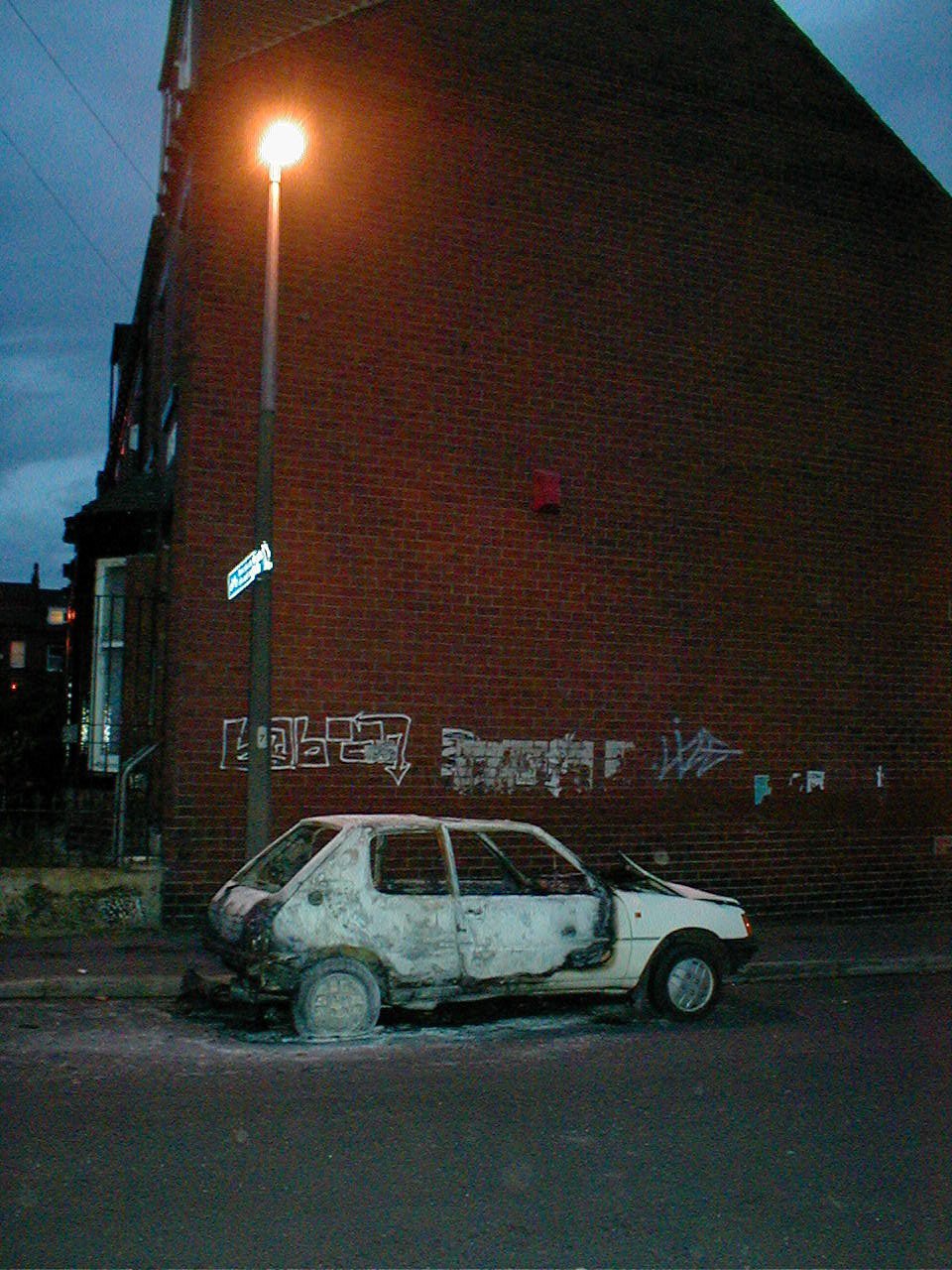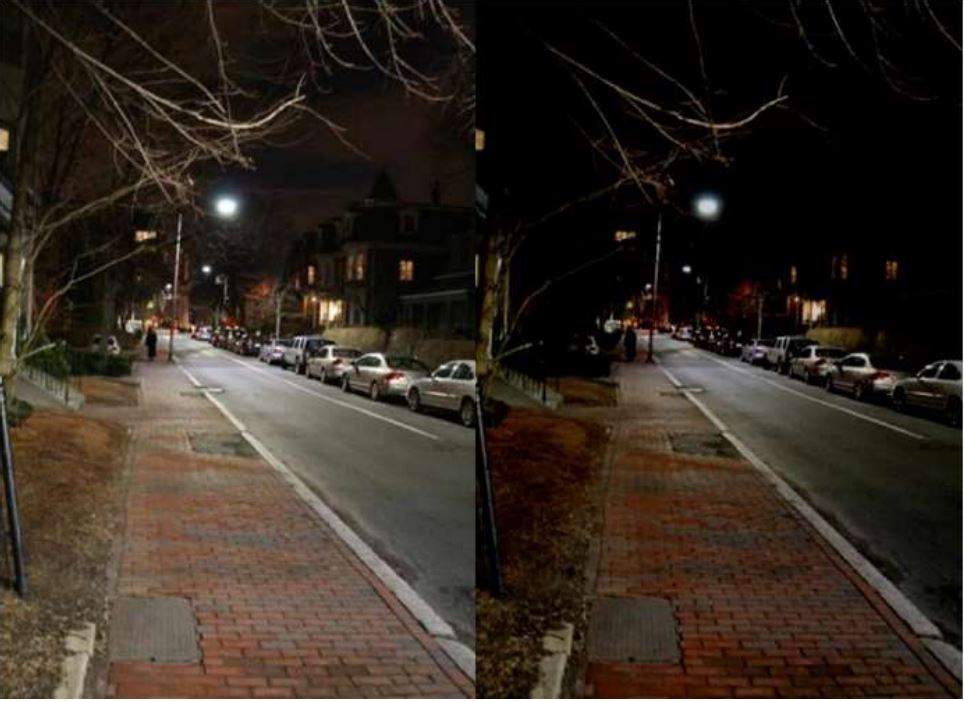
Crime & Road Safety
There is a misconception that more lighting at night makes people safer and reduces road accidents...
In late 2009, Leeds commenced a trial to dim the street lighting in an area of Wortley, initially reducing the light output by about 20% after 9pm and then a further reduction to 50% between midnight and 5am, after which the street lights returned to full output. After the trial was completed, the council carried out a survey of residents to determine their perception of the trial.[1]
- 80% of residents had not noticed the reduction in light output.
- 89% of residents thought the dimmed street lighting would have no effect on road traffic accidents.
- 77% of residents thought the dimmed street lighting would have no effect on crime.
- 79% either had not noticed or felt that the dimmed lights would make no difference to their perception of safety.
Admittedly this was only a small survey, but there have been other more thorough investigations. In 1991 the Home Office published a report on "The Influence of Street Lighting on Crime and the Fear of Crime" which was researched by the University of Southampton, and looked at 100,000 crimes in the London Borough of Wandsworth. The conclusion was that a four-fold increase in lighting had little or no effect on crime, even in what was considered a high crime borough. They did find however find a clear relationship between the peoples perception of safety and lighting.[2]
Similarly a Police report from 2017 on Part-Night lighting in Essex found "no evidence that turning street lights off at night causes an increase in crime, anti-social behaviour or serious injuries and deaths on the county’s roads".[3]
Probably the most exhaustive study to date has been the LANTERNS project by the NHS National Institute For Health Research.[4] This looked at data from 62 local authorities where street lighting measures had been implemented. The measures consisted of: switching off street lights; part-night use with lights turned off between 12am & 6am; dimming of street lights; and white LED lighting. Collectively data from 30,000 km of roads was studied with over 23,000 km having part-night, dimming or total switch off regimes.
Their conclusion was that reduced street lighting at night did not lead to an increase in road accidents or an increase in crime. They also conducted a survey of 1,000 households which found that part-night and switch-off regimes were unpopular with some people.
In October 2018 Leeds City Council approved the roll out of new LED street lights and a Central Management System (CMS),[5] which would in theory be capable of implementing a dimming regime. In the public consultation, 69.8% supported the expansion of part-night switching but dimming, which is a better compromise wasn't given as an option. (Leeds, by the way, already has 4,000 street lights in rural areas that are switched off at midnight.)
In addition to street lighting, another study of 248,000 burglaries in homes in Britain, found that 48% had exterior lighting.[6] This has got to make you wonder whether security lighting helps or hinders criminals...

The effect of dimming street lights can be seen opposite. The picture by 'WSP / Parsons Brinckerhoff' is from Cambridge, MA. where lights are at 100% illumination at dusk and then are dimmed to 50% at midnight.
In Leeds, the indication was that the Control Management System would enable lights to dimmed on main routes, where the BS-EN13201 specification allows lighting levels to be varied in accordance with traffic levels (except at junctions and other potential collision zones).
Given our eye's have a logarithmic response to light, where a reduction in brightness of 50% is only perceived by eyes which aren't dark-adapted as a 30% drop, there surely must be an arguement for dimming lights in most residential areas too.
[1] "A review of local authority road lighting initiatives aimed at reducing costs, carbon emissions and light pollution" report to Defra: http://randd.defra.gov.uk/Document.aspx?Document=LAStreetLightingInitiatives(Final140911).pdf
[2] Home Office (1991) "The Influence of Street Lighting on Crime and the Fear of Crime" http://www.celfosc.org/biblio/seguridad/atkins.pdf
[3] https://www.essex.pfcc.police.uk/news/report-finds-no-evidence-part-night-lighting-impact-crime-levels/
[4] NHS National Institute for Health Research (2015) https://www.journalslibrary.nihr.ac.uk/phr/phr03110/#/abstract
& British Medical Journal – Journal Of Epidemiology & Community Health – "The Effect of reduced street lighting on road casualties and crime in England and Wales: controlled interrupted time series analysis” (2014) https://jech.bmj.com/content/69/11/1118
[5] https://democracy.leeds.gov.uk/ieDecisionDetails.aspx?Id=48056
[6] Austrian Government – "Austrian Guidelines For Outdoor Lighting" (2019) https://www.land-oberoesterreich.gv.at/files/publikationen/us_Leitfaden_Guidelines_Outdoor_lighting_english.pdf